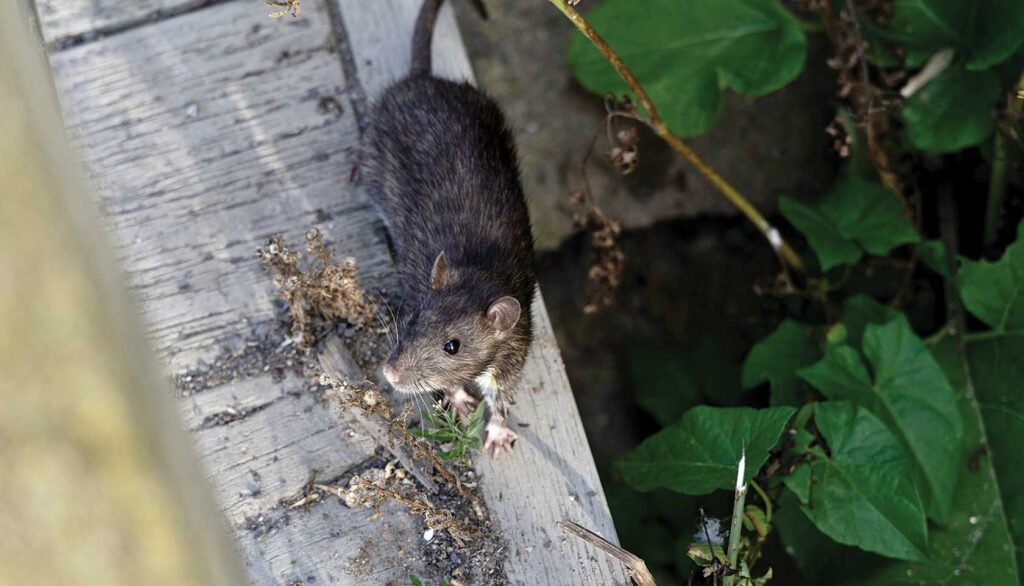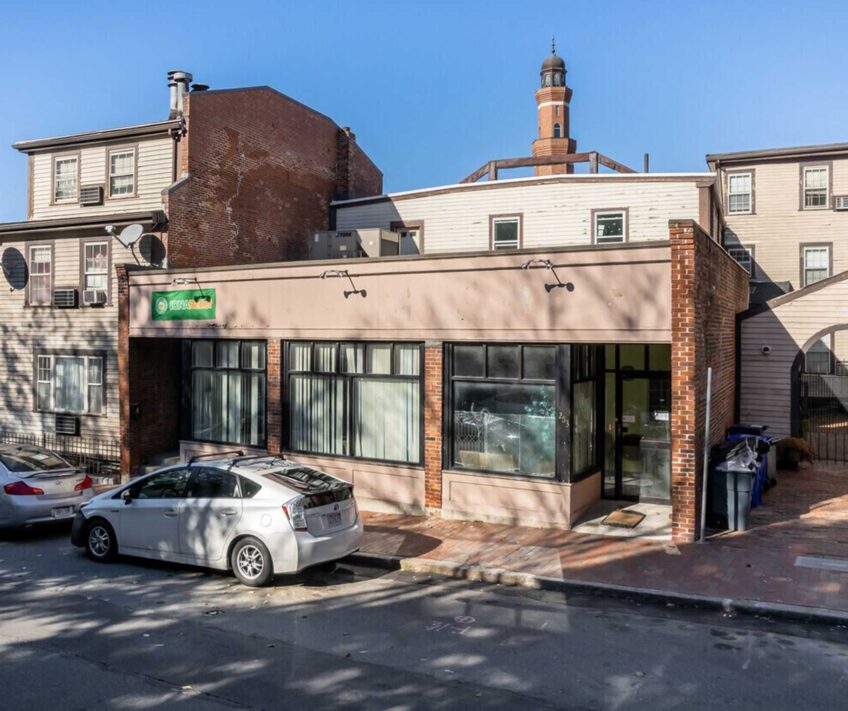Boston’s new rat plan enlists coordinated effort to tackle city’s rodent population

Since her run for city council, Mayor Michelle Wu pushed to make the city of Boston welcoming to all. This summer, she added an asterisk to that mission: rats excluded.
“We’re working to make Boston a home for everyone. Except for rats,” she said in a statement when launching a new Boston Rat Action Plan in June.
That plan encompasses a multi-departmental effort across the Boston government to reduce the rodent population, with steps including improving trash collection in spaces like public parks, monitoring and educating about littering in housing and public housing areas, and better data collection and monitoring.
Those efforts have to occur in conjunction with each other and at the same time, said Robert Corrigan, the urban rodentologist who authored the report informing the city’s Rat Action Plan. If not, treating rats in the city’s sewers might just push them up into park spaces or neighboring residential areas.
“The rats don’t respect agency boundaries,” Corrigan said.
When the city announced the plan, it said it planned to combine resources from the city’s Inspectional Services Department, the Boston Housing Authority, Water and Sewer Department, the Parks and Recreation Department, Boston Public Schools and others to address the issue.
But, while the city is leading the charge, Corrigan said residents, too, can take steps to reduce rat populations. In launching the plan, the city also said it would look to coordinate with property owners and the general public.
The biggest step Corrigan advised was taking care of your individual space, pointing to the habit of rats going back to the places where they know they’ve found food before.
“It’s not just for Boston. If the whole world did that kindergarten simple work, rats would be far less of an issue for us,” he said.
That should include getting a better trash can with a tight-fitting, metal lid that rats can’t chew through, and making sure food scraps or other refuse end up in the trash can, rather than on the ground.
“You may have rats in the block, but when they get to your place, it’s like, ‘Don’t bother. There’s nothing here for us. Go to the next property,’” Corrigan said. “It’s that simple.”
It should also be a community effort, said Colin Zeigler, an environmental health manager with the city of Somerville. He encouraged residents to talk with their neighbors about rats.
“It’s the number one thing you can do. Talk to them about what you’re seeing, what you’re doing, where you think [the rats are] coming from, where they might be eating or living. From there, you can work together to develop a plan,” said Zeigler, who has been described as the city’s “rat czar.” Whether Boston will tap a specific “rat czar” remains to be seen; Corrigan’s report found that, given a czar’s role is often a big program facilitator rather than a subject matter expert, such a role would have pros and cons.
Regionally, Somerville led an early charge to address local rat populations, declaring its “War on Rats” in 2013. As a veteran in the war on rats, Zeigler said the city had looked at Boston’s Rat Action Plan and thought it “looked fantastic.”
One key piece of Boston’s report is a move away from traditional rodenticides.
Those poisons, called second generation anticoagulant rodenticides, are typically found in the black rat box traps placed out and, when ingested, prevent the rats’ blood from clotting, which leads to internal bleeding.
But the poison, once it kills the rat, doesn’t disappear. Instead, it cycles through the urban ecosystem as local wildlife eat the dead rodent, becoming what Corrigan called an “environmental menace.”
“Everything that consumes a dead mouse or rat carcass is now ingesting some pretty toxic, dangerous poisons into their system,” he said.
The rodenticides have been known to impact other mammals like squirrels and foxes, birds of prey like hawks and eagles, plus pets that eat the poisoned rats. Researchers have also identified the presence of the poisons in fish and aquatic systems.
The Boston City Council is taking its own stab at promoting an alternative. In its July 10 meeting, District 5 Councilor Enrique Pepén called for a hearing to explore a rat birth control program that would allow the city to work to control pest populations without risking exposure to poisons.
That follows a pilot program in Jamaica Plain, which WISDOM Good Works — the company running the pilot — said saw a 50% to 60% reduction since September 2023, according to reporting by the Boston Globe.
But residents in the Hyde Square neighborhood, where the pilot is running, had mixed feelings about the pilot and its effects, according to that article.
Corrigan, who ran similar rodent birth control work in New York subways 12 years ago, said he has his doubts about the effort and how effective it will be, citing the scale of reducing a rodent population through birth control.
While the approach has proved effective in lab settings in individual animals, Corrigan said he has yet to see evidence that it will have a city-wide effect of reducing populations.
He also cautioned against widespread adoption of the technique without extensive testing — the same way new pesticides have to be tested — to make sure it won’t have unintended consequences.
However, as a more humane option, the approach is an appealing one, with good optics. And in the region, Boston’s efforts are not the only ones in the area to attempt to address local rodent populations, nor is the city alone in looking to do the work while minimizing the use of poisons.
Zeigler said Somerville and Cambridge, in a joint effort, are looking to pilot rat birth control as a potential solution as well.
Additionally, municipalities including Somerville, Brookline, Cambridge and others have installed SMART boxes, electronic rat traps that sense, trap and electrocute the rodents, while allowing the cities and towns to track data about the populations.
In Cambridge, since the city started installing the boxes in May 2022, it reported catching and killing over 3,600 rats, according to data released by the city.
In Somerville, the city reported capturing and killing over 1,000 rats in the first six months they were installed, according to a statement the city made to GBH in late 2022. The city first installed the boxes in late February of that year.
Those boxes are part of an extensive set of solutions Somerville is attempting — some tried and true other more experimental pilots — but Zeigler said that through it all, one key piece is to try to get ahead of the problem.
“You’ll never be able to solve a rodent problem by being reactive,” he said. “You have to address the vectors of rodent and population growth — food, water and shelter. That’s the mantra here.”






